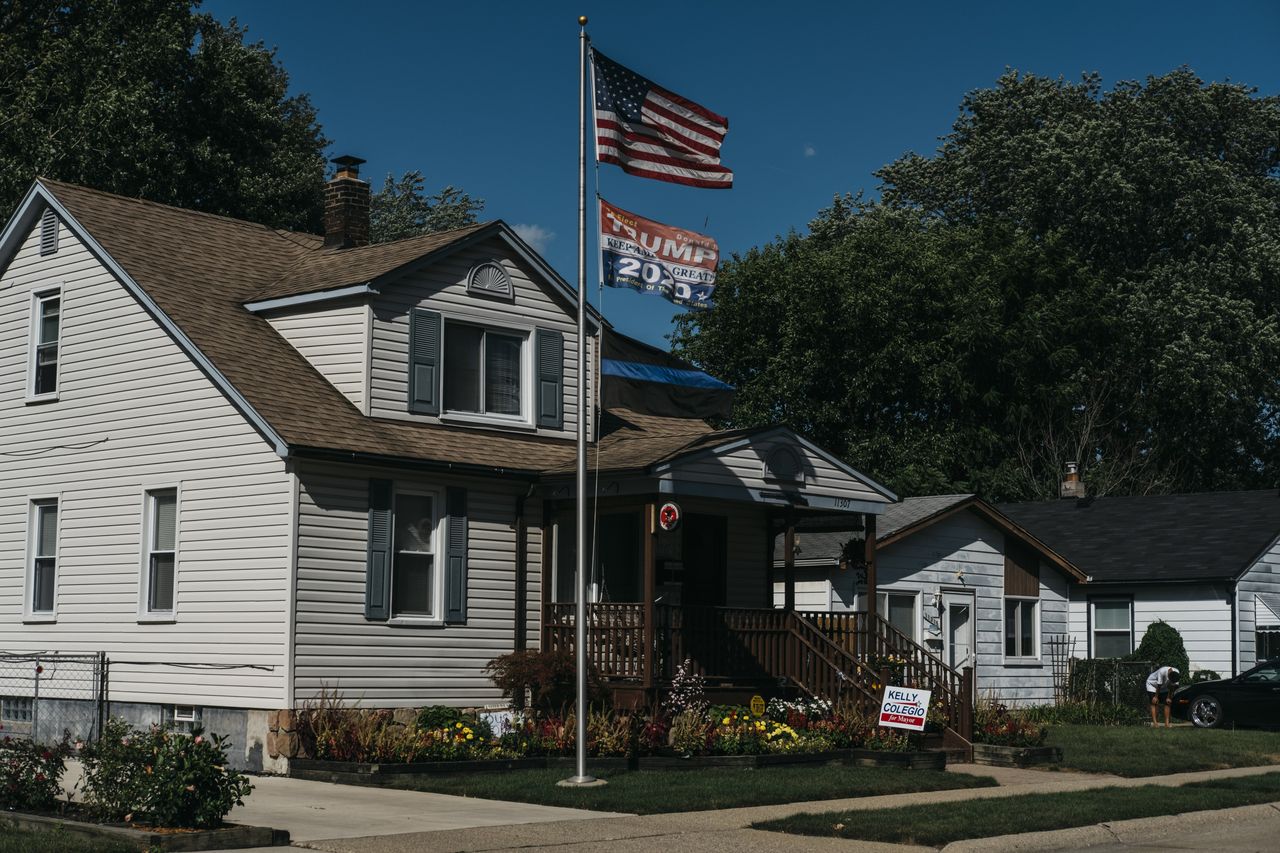Trump Campaign’s Hopes Rest on Boosting White Working-Class Turnout
There are millions of potential Trump supporters who didn’t show up to vote in 2016. But getting them to the polls won’t be easy.
Not long ago, white working-class voters flooded to the polls in unusually large numbers to help the GOP win the White House. But that year wasn’t 2016. It was 2004, and the president they turned out to re-elect was George W. Bush.
Today, Mr. Bush’s achievement in driving turnout suggests an opportunity for another Republican re-election bid. Donald Trump’s campaign has said its strategy is to boost voter registration and turnout among the people who most support him—largely, the white working class—a goal distinct from trying to persuade undecided groups or Democrats to move his way.
An analysis of voter data shows that the opportunity, at least on paper, is substantial.
White voters without four-year college degrees, often called the white working class, make up the largest share of nonvoters in many battleground states, and Mr. Bush showed that it’s possible to boost turnout significantly among that group.
For Mr. Trump, the target is voters such as Kyle Campbell of Blanchester, Ohio, who sat out the 2016 election. “I like Trump because he’s a no-bull—kind of guy,” said Mr. Campbell, 26, who works in manufacturing. He supports much of what the president has done, such as taking a tough line on China. “I’m 100% voting for Trump.”
Assuming the same turnout rates as in 2016, about 62% of Michigan’s nonvoters this year, or 1.6 million people, would be white residents without a four-year college degree, according to an analysis of census data by William Frey, a Brookings Institution demographer. In Pennsylvania, white residents without degrees also would account for about 62% of nonvoters, or 2.1 million residents. In Wisconsin, they would account for 67% of nonvoters, or more than 800,000 people. Mr. Trump won each of the three states by a margin of less than 1 percentage point.
Those pools of potential voters are so large that even a modest increase in turnout would give a significant boost to Mr. Trump, assuming that he maintained his high, 60%-plus share of their vote from the last election. Wall Street Journal/NBC News polls over the January-to-July period show his support has held at about 60% among these voters.
Mr. Trump’s campaign has said the president’s key to victory is to focus on his core supporters and to drive out what it believes are hidden Trump voters or those who make up a “silent majority.”
“There’s a rational explanation for why he never reached across the aisle. He saw a bigger plot of real estate among the people who never engaged in the election in 2016 to begin with,” said GOP pollster Micah Roberts, who isn’t affiliated with the campaign. “Those people are a huge chunk of the potential vote.’’
It’s a tough challenge for any campaign to persuade people who aren’t in the habit of voting to register and cast ballots. Despite the enthusiasm Mr. Trump generated among his core supporters, it wasn’t a surge of new voters that won the election for him in 2016. Turnout among white, noncollege voters, in fact, was down from 2012 levels in Michigan and Wisconsin, Mr. Frey’s analysis shows.
Read the rest from the WSJ HERE.







Comments are closed.